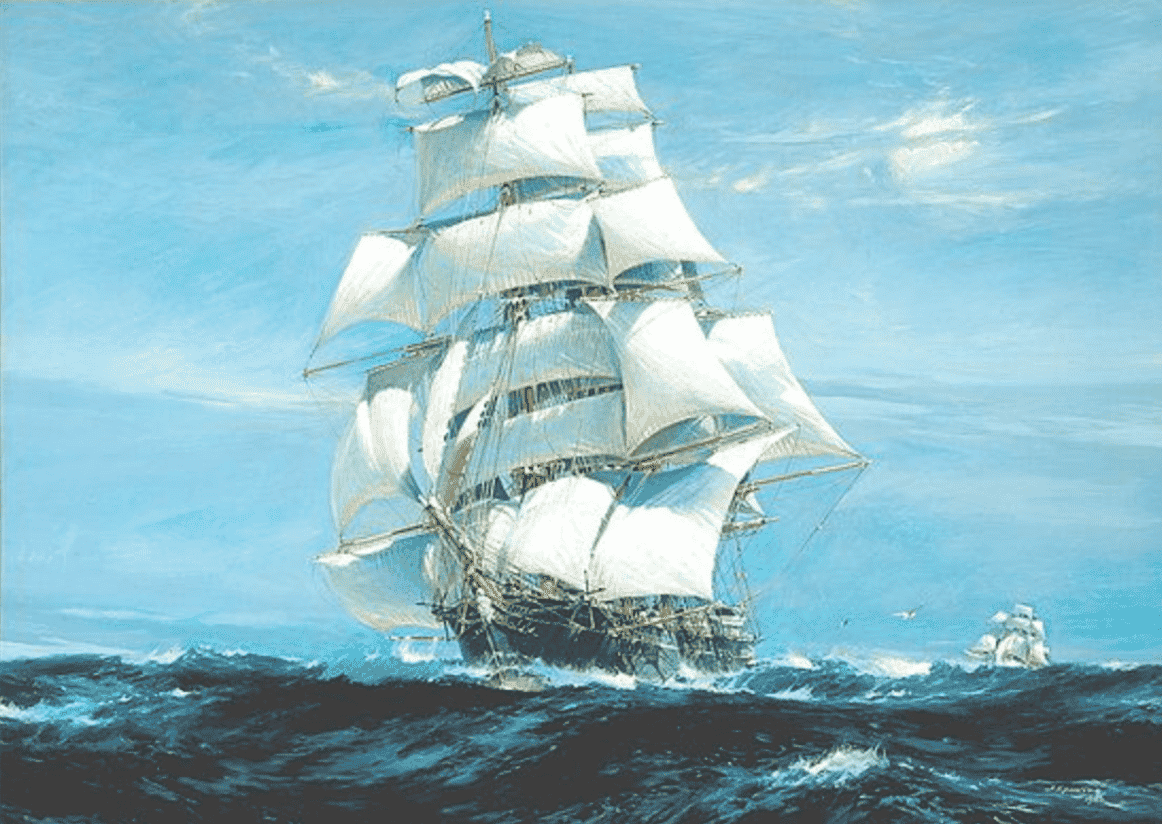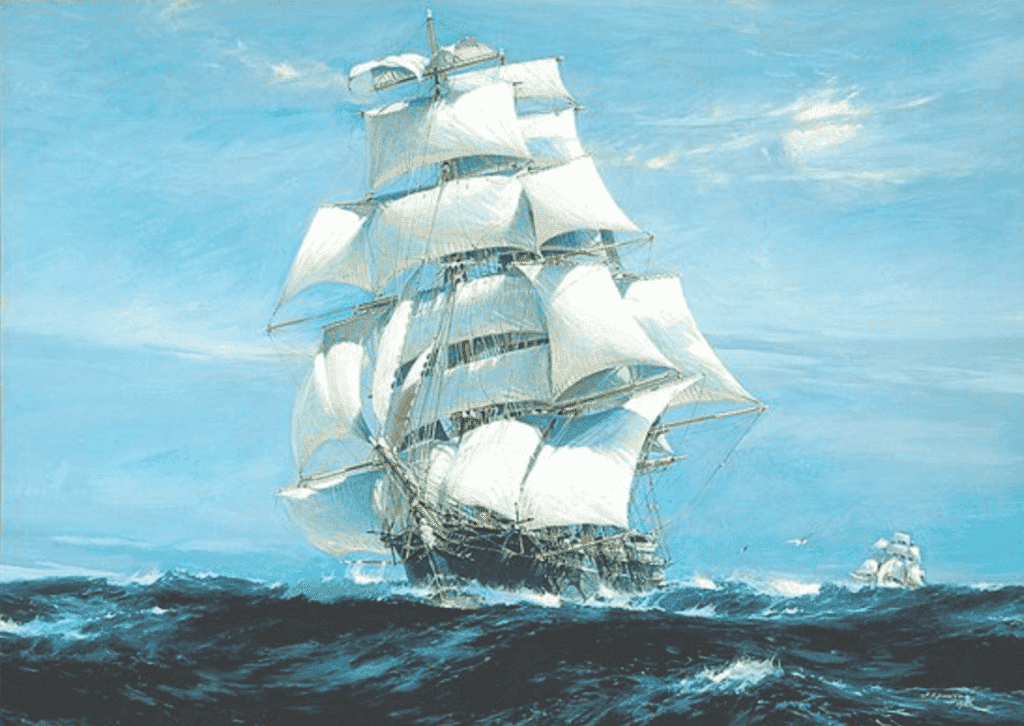After watching the daily updates of U.S./China trade talks, tariffs, and market reactions this year, we feel it is important to look closely at China and how the country might impact our clients’ investment policy decisions. Our research led to a surprising conclusion: a developing economic giant is taking lessons from history to forge a pathway to prosperity. We believe investors should not get lost in trade talks and tariffs and, rather, focus on the fundamental market viability of Chinese companies. Perhaps, just perhaps, the trade issues are secondary to other Chinese policy priorities.
Xi Jinping has proven to be a hardliner, a throwback even, to the good old Cultural Revolution days. He is now ruler for life and has demonstrated an aggressive demeanor. Upon closer examination of the Xi-way, we were struck by the similarities with another era that began in 1600 and ran for over two hundred years; namely, the lifespan of the East India Company (EIC).
The EIC was commissioned by Queen Elizabeth to develop trade with India and the private joint stock company was a modest undertaking at first, established to bring the riches of India to Great Britain. It is hard to understate, and even harder to grasp in modern times, what this start-up developed into and what the EIC accomplished in its 250 years of operation.
The EIC began its work by stripping a Mughal ruler from India’s Muslim royalty of his regional tax collectors and replaced them with subjects of the Queen. The taxes collected from the Muslim region of India fueled the massive growth of the EIC and enabled spices, cotton and other Indian products to be shipped to Britain. In just over 40 years, the EIC fielded an army 200,000 strong, larger than any other Asian force, and controlled most of India. In the EIC’s founding charter it specifically stated that the EIC could wage war, and they were not shy about using their charter. The Company could call on the British Navy when needed, and British troops trained Indian soldiers for the EIC force. Lines started to blur whether the EIC was a public company or a branch of the British Government.
The EIC quickly spread globally and China was the next target. Chinese tea was a particular favorite in England, and, by 1800, the EIC was buying 23 million pounds of tea from China at a cost of 3.6 million pounds of silver a year. EIC tea had already been shipped worldwide, even as far as Massachusetts—where, in 1773, 342 tea chests imported by the EIC wound up at the bottom of Boston Harbor. Huge clipper ships transported the tea to Britain. The Great Tea Race of 1866 was big news as the world watched these beautiful sailing ships make the 14,000 mile journey in ninety-nine days. Steam powered ships then began to slowly edge out the clipper ships as a preferred means of shipping.
Painting by Jack Spurling above shows British clipper ships racing to England with the first crop of Chinese tea.
Trading Opium for Tea
The EIC was a massive company and was growing quickly with direct assistance from the British Parliament. But the British government feared this tea-buying spree was draining its silver reserves and found that opium grown in India could serve as a convenient legal tender for the tea trade in China. The illegal introduction of opium to China created a growing problem as more and more Chinese grew addicted to the drug.
China, shocked by the addiction outbreak, outlawed the opium trade and confiscated and destroyed some 1,400 tons of the drug that the EIC had warehoused. The EIC was incensed and, in 1839, called for British military assistance. With heavy naval support, the first of two Opium Wars began, and in 1842 the Chinese suffered a humiliating defeat and signed the Treaty of Nanking, which coincidentally, passed ownership of Hong Kong to Great Britain for the next 155 years before regaining control of the territory in 1997.
The East India Company was dissolved in 1858 following the Indian Rebellion and it turned over governmental functions to official British agencies beginning what is known as the British Raj era. The EIC army and navy were absorbed into the British military and India was ravaged by war against the British Raj until Indian independence in 1947.
The EIC was undoubtedly a not-so-shiny example of the public-private partnerships we often hear discussed today. We believe Xi has noticed this as well.
Just as the EIC oppressed the Muslim regions of India, taxing the population and utilizing the EIC army to enforce order, Xi has formed re-education camps for Uighurs in western China and suppression of Muslim influences in Chinese party politics and culture are strictly adhered to. This week the European Sakharov Prize for Freedom went to Ilham Tohti, a Uighur economist detained in a Chinese prison for his separatist views. Hundreds of thousands of Muslim Uighurs are routinely detained today in China. Radio Free Asia, run by the U.S. government, has regular programming focused at getting news to this Chinese minority group.
Meanwhile, staying true to the EIC blueprint of establishing worldwide logistics networks, Xi has embarked on a global infrastructure project on a scale that dwarfs even the post-World War II Marshall Plan. Chinese foreign policy is being implemented through private and quasi-private Belt & Road Initiatives as we have discussed in past Strategy Reports. Xi is going into Africa, Europe and Asia and offering financing for schools, highways, bridges and railroads.
Many of these beneficiary countries can never dream of paying off the Chinese debts and some raw feelings are emerging. These Chinese projects, with Chinese workers, are eerily reminiscent of the EIC. Private companies working to further Chinese state interests, extracting minerals and foodstuffs, oil and countless other provisions for consumption in the Middle Kingdom mirror the British approach to India many years ago. In the Democratic Republic of Congo alone the Chinese have snapped up valuable deposits of copper and cobalt to the tune of $8 billion since 2012. These are strategic metals in the rush for renewable energy sources. The sheer scale of these projects is illustrated by the Kunming to Shanghai rail project currently underway. The $6.7 billion project will allow modern high-speed rail to link southwest China with Singapore. Worth noting is a portion of the rail line crossing Laos. The Communist Laotian government has taken a $480 million loan from the Chinese to complete the work; that equates to 2 percent of the country’s GDP.
In April, at the Second Annual Belt & Road Forum, 37 countries attended and signed a pledge to cooperate as the global project enters its next phase. Despite vocal U.S. objections, Italy became the first Group of Seven member to endorse the massive Chinese effort. Switzerland signed the agreement in April adding further European support. Xi closed the Forum by announcing $64 billion in new deals with Xi’s biggest Belt & Road success being the Greek port of Piraeus. The Chinese operate the port through the state company COSCO, and have built it from an also-ran facility into the sixth busiest port in Europe. At the same time, the Chinese have taken five years, and still talking, to agree to the Comprehensive Agreement on Investment (CAI). This Chinese-European Union (EU) agreement would ease trade with the European nations, and EU parties are growing weary with the talks. Perhaps, like the US trade talks, the Chinese place little emphasis on coming to a consensus, and instead are playing for time as they build out their own economic model.
And Opium for Fentanyl
Following the EIC script from the Opium Wars, the Chinese have successfully exported Fentanyl, a drug much stronger than opium-based morphine, and has been condemned by U.S. trade negotiators as a problem in America’s opioid crisis. Fentanyl has contributed to thousands of American overdose deaths. It is cheap to obtain and has contributed to our opioid epidemic. It appears Xi has found an element of revenge for the Opium Wars and has helped contribute to the addiction problems on our shores. These problems are by no means the sole product of Chinese actions, as numerous American pharmaceutical companies have made major contributions to the addiction epidemic as well.
The Opium Wars finale, the Treaty of Nanking, makes itself felt daily despite Hong Kong’s return to China. Hong Kong has experienced months of street rioting and violence in opposition to Chinese rule. Xi has held back in unleashing his military, but how long will he remain patient?
The EIC functioned for over 250 years, and undoubtedly Xi plans the same for China’s new expansionary era. The development of military installations on tiny islands throughout the South China Sea is a quiet reminder of the growing Chinese military presence. The first Chinese military installation outside of China was established at Djibouti, in East Africa, no doubt to protect Chinese Belt & Road interests on that continent.
Invest in the Middle Kingdom?
So how should investors proceed? A first step is to tune out the daily trade talk twists and turns as the reporting and government statements are unhelpful, and frankly, only take our eye off the ball. The bigger picture is that two colossal economies are building for their separate, but entwined, futures. Any talk of “they need us worse than we need them” is shortsighted and simply wrong. Both countries need each other and both have bright futures. Chinese companies will use the Belt & Road projects to ship goods home to expanding internal markets as Xi’s government attempts to shift from an export-led economy to one fueled by domestic consumption. Advanced manufacturing is increasingly taking hold in China in areas such as quantum computing and artificial intelligence. The race is on with the U.S.
There has been talk of a de-coupling of Chinese-American ties. Regardless of de-coupling or enforced trade agreements, investors should look at the Chinese market as a long-term holding if only for the fact that China is now home to more companies in the global Fortune 500 than the U.S. Alibaba, Baidu, and Ping An lead a long list of viable companies investors can own to participate in a developing China.
And despite the harsh rhetoric of late, China is selectively opening to U.S.-based companies. In September, amidst the heat of trade disputes, PayPal received the People’s Bank of China’s approval for an acquisition of a 70% equity interest in GoPay, a Chinese license provider of online payment services. This will enable PayPal to expand its relationships with existing Chinese partners like China Union Pay and AliExpress. PayPal will likely provide the needed bridge in cross-border payments for Chinese consumers to access U.S. e-commerce sites like Amazon.
In electric vehicles (EV), Tesla’s plant has begun operations in Shanghai. EV technology is a Chinese priority, and Tesla will play a role alongside Chinese offerings in the EV space, such as NIO. Other American companies will thrive in China, but on China’s terms. To put Chinese economic clout in digital terms, China will drive close to $2 trillion of online sales in the coming year. That comprises more than 50% of global online retail activity. The upshot is that Xi is opening Chinese markets at his pace and in strategic areas meeting China’s targeted economic goals. Investors can take advantage of this shift by carefully considering holdings that should do well regardless of trade tensions.
The wheels are in motion. The U.S. economy remains robust even amidst global trade tensions. Technology drives companies ever forward, faster and more efficiently. Both China and the U.S. will benefit and so will investors. We suggest not overlooking these international opportunities. Remember Warren Buffet’s remark that the luckiest baby born in the world today is the one born in America. The U.S. enjoys the problem of having large numbers of immigrants lined up to enter the country and a U.S. visa is a desired part of furthering a career in many countries. This reinforces the fortunate status we enjoy.
In short, we feel it is quite possible the Chinese economic policy employed by Xi will continue to slow-play any trade deals of any magnitude with Western democracies and continue to build-out a 22nd century platform from which his beloved country will challenge the world economically and militarily. It is not a coincidence that we don’t see long lines of Americans hoping to emigrate to China, and Xi would be wise to re-read the history of the fate of the East India Company. It was undone by people’s revolt. Keep an eye on Hong Kong and the Uighurs; the Chinese certainly are…
E. B. “Chip” Beard
November 1, 2019


